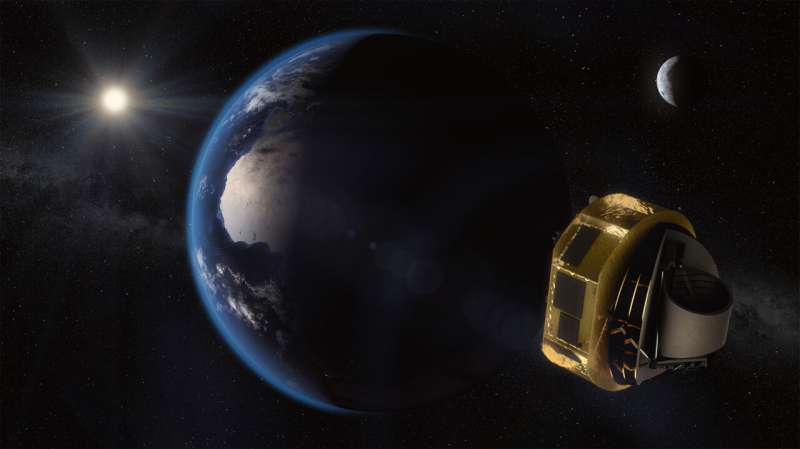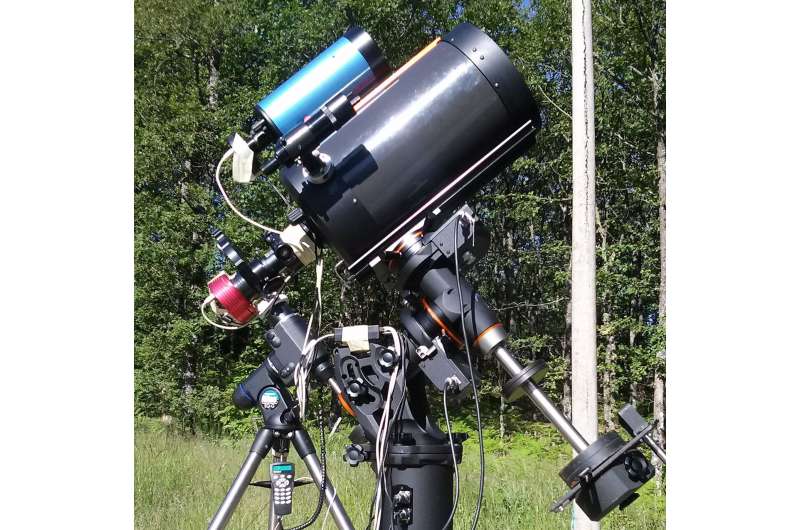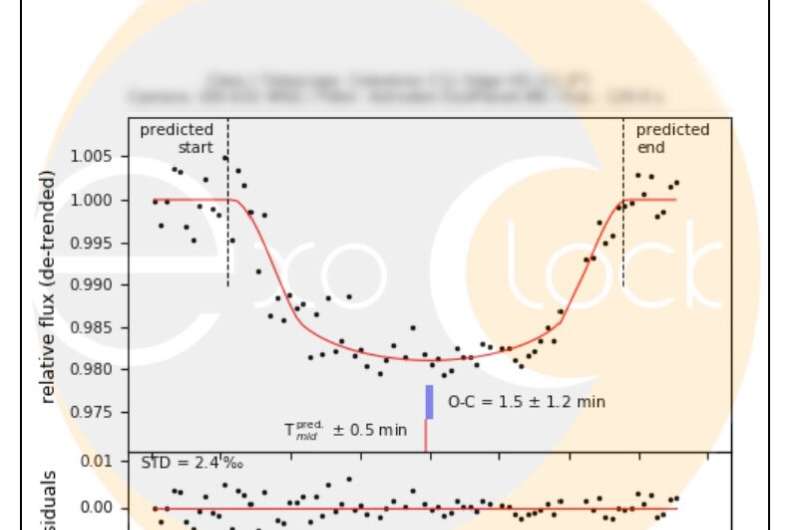Project counts down Ariel exoplanet targets

Details of the orbits of 450 candidate exoplanet targets of the European Space Agency's Ariel space mission have been presented this week at the Europlanet Science Congress (EPSC) 2022, and submitted for publication in the Astrophysical Journal Supplement Series. The study, coordinated by the ExoClock project, has been co-authored by 217 professional and amateur astronomers, as well as university and high school students.
"The ethos of ExoClock can be described in three key words: inclusive, interactive, and integrated. It is open to everyone and accepts contributions from amateur astronomers, students, schools and public citizens," said Anastasia Kokori, ExoClock project coordinator. "This is the third paper produced by the ExoClock team. The majority of the authors are amateur observers—around 160—and this significant number highlights the interest and the value of the amateur community in contributing to space research."
Ariel will study a population of more than 1,000 exoplanets to characterize their atmospheres. The ExoClock project, which launched in September 2019, aims to support the long-term monitoring of exoplanets through regular observations using small and medium scale telescopes.
Participants submit measurements known as "light curves," which show the drop in intensity as a planet "transits" or passes in front of its host star and blocks some of the light. When Ariel launches in 2029, it will need to have precise knowledge of the expected transit time of each exoplanet that it observes, in order to maximize the mission's efficiency and impact.

"The new study showed that over 40% of ephemerides for proposed Ariel targets needed to be updated. This highlights the important role that the ExoClock community can play in monitoring the Ariel targets frequently," said Tsiaras.
ExoClock participants schedule and carry out observations, analyze the data and submit their results for review and feedback from members of the science team. This interactive process helps maintain consistency in results, and enriches the experience of the participants who learn through dialogue.
The results show that small and medium sized telescopes can successfully observe ephemerides for the large majority of the Ariel candidate targets. They also show how observations by amateur astronomers using their own telescopes can contribute to real science and have a high impact for a mission. The project helps to integrate Ariel with other space missions, ground-based telescopes, literature data and wider society, making best use of all available resources.

Kokori says that "science is for everyone, and we are very happy that through the project everyone can be part of a real space mission. Our observers come from more than 35 countries and have different backgrounds. It is wonderful to see so many people willing to learn and work together in a collaborative spirit. Our team keeps growing daily with participants from all over the world."
More information: Conference: www.epsc2022.eu/
ExoClock: www.exoclock.space/
Provided by Europlanet





















